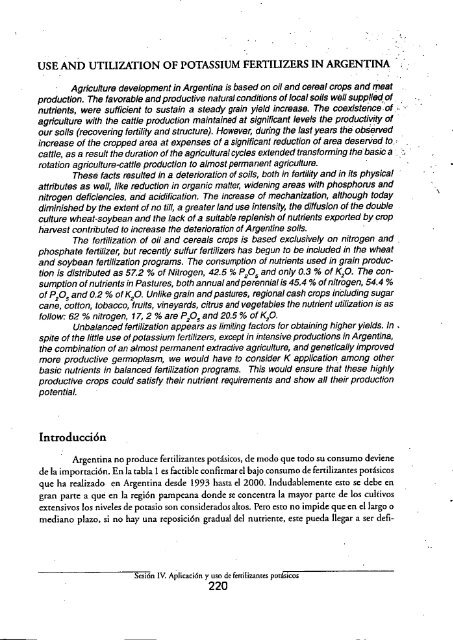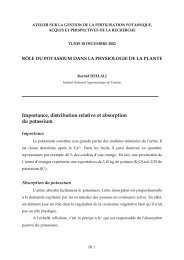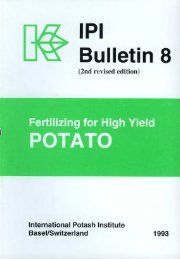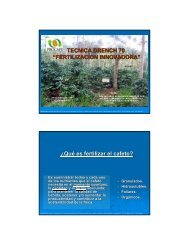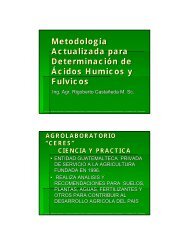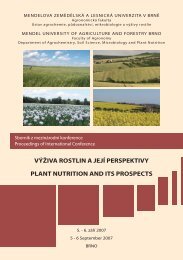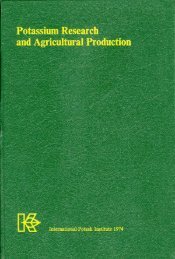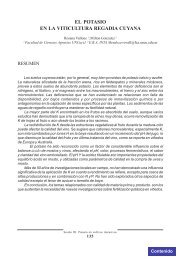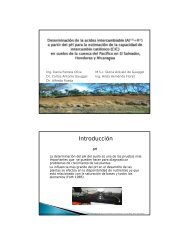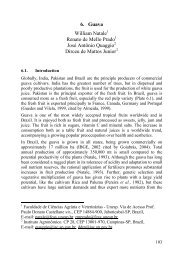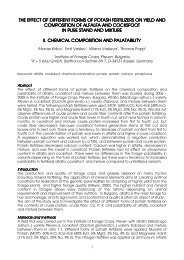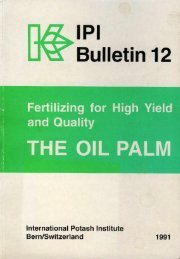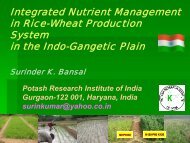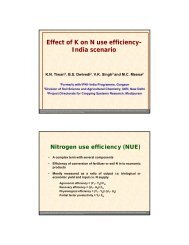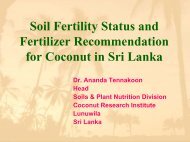Download publication - The International Potash Institute
Download publication - The International Potash Institute
Download publication - The International Potash Institute
Create successful ePaper yourself
Turn your PDF publications into a flip-book with our unique Google optimized e-Paper software.
USE AND UTILIZATION OF POTASSIUM FERTILIZERS IN ARGENTINA<br />
Agriculture development in Argentina is based on oil and cereal crops and meat<br />
production. <strong>The</strong> favorable and productive natural conditions of local soils well supplied of..<br />
nutrients, were sufficient to sustain a steady grain yield increase. <strong>The</strong> coexistence of,!agriculture<br />
with the cattle production maintained at significant levels the productivity of<br />
our soils (recovering fertility and structure). However, during the last years the obierved<br />
increase of the cropped area at expenses of a significant reduction of area deserved to.,<br />
cattle, as a result the duration of the agricultural cycles extended transforming the basic a<br />
rotation agriculture-cattle production to almost permanent agriculture.<br />
<strong>The</strong>se facts resulted in a deterioration of soils, both in fertility and in its physical<br />
attributes as well, like reduction in organic matter, widening areas with phosphorus and<br />
nitrogen deficiencies, and acidification. <strong>The</strong> increase of mechanization, although today<br />
diminished by the extent of no till, a greater land use intensity, the diffusion of the double<br />
culture wheat-soybean and the lack of a suitable replenish of nutrients exported by crop<br />
harvest contributed to increase the deterioration of Argentine soils.<br />
<strong>The</strong> fertilization of oil and cereals crops is based exclusively on nitrogen and<br />
phosphate fertilizer, but recently sulfur fertilizers has begun to be included in the wheat<br />
and soybean fertilization programs. <strong>The</strong> consumption of nutrients used in grain production<br />
is distributed as 57.2 % of Nitrogen, 42.5 % P2O5 and only 0.3 % of KO. <strong>The</strong> consumption<br />
of nutrients in Pastures, both annual and perennial is 45.4 % of nitrogen, 54.4 %<br />
of P 20, and 0.2 % of K20. Unlike grain and pastures, regional cash crops including sugar<br />
cane, cotton, tobacco, fruits, vineyards, citrus and vegetables the nutrient utilization is as<br />
follow: 62 % nitrogen, 17, 2 % are P205 and 20.5 % of K20.<br />
Unbalanced fertilization appears as limiting factors for obtaining higher yields. In.<br />
spite of the little use of potassium fertilizers, except in intensive productions in Argentina,<br />
the combination of an almost permanent extractive agriculture, and genetically improved<br />
more productive germoplasm, we would have to consider K application among other<br />
basic nutrients in balanced fertilization programs. This would ensure that these highly<br />
productive crops could satisfy their nutrient requirements and show all their production<br />
potential.<br />
Introducci6n<br />
Argentina no produce fertilizantes potisicos, de modo que todo su consumo deviene<br />
de la importaci6n. En la tabla 1 es factible confirmar el bajo consumo de fertilizantes potisicos<br />
que ha realizado en Argentina desde 1993 hasta el 2000. Indudablemente esto se debe en<br />
gran parte a que en la regi6n pampeana donde se concentra la mayor parte de los culivos<br />
extensivos los niveles de potasio son considerados altos. Pero esto no impide que en el largo o<br />
mediano plazo, si no hay una reposici6n gradual del nutriente, este pueda llegar a ser deft-<br />
Sesi6n IV. Apiicacidn y uso de fertilizanres potisicos<br />
220


